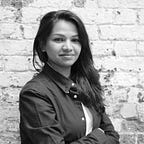Snailspective: Sensing and seeing like a snail
‘The relation between what we see and what we know is never settled’ — John Berger
In Ways of Seeing, a 1972 British Television series; John Berger the British artist and intellectual talks about seeing and perception. According to Berger, Ways of seeing depend on the context and the experience of an individual. And what we see is dependent on our prior knowledge and beliefs which are cultured into us according to the social construct we live in. Where we see and when we see also has an impact on what we see. In other words, seeing or looking is a political act.
Being human our perception has its limitations. We can see what is right in front of us and analyse what happened in the past through experience. This way we project patterns for the future purely based on the events experienced in the past.
Birds Eye view:
A ‘bird’s eye view’ — commonly used phrase in the English language refers to seeing a events from a holistic point of view. i.e. One has not only has a top angle view of the event but also can look at the surroundings from all sides to check out for patterns or discrepancies if any. It is about looking into the network of events which are attached to the one being analysed.
However, no one talk about a snail’s point of view. Yes, you heard it right we are talking about ‘Snails’. The world they see is different. Snails are associated with slowness and projected as a symbol of lethargy and sluggishness. However, one does not know that a snail can see the world only in black and white. They only see the intensity of light, which directs them to dark places for their survival which is the ultimate goal here.
Innovation Management Perspective:
When a snail moves, irrelevant of its pace, the direction it takes is directly connected to its ability to sense the intensity of light. Since its nature is to always look for places to hide and survive from predators; sensing becomes an important part of its being alive. its ability to look at surroundings in black and white and by the intensity of light, directly translates to the attribute of sensing.
‘Sensing’ is also one of the main practices of innovation. Sensing refers to a somatic interpretation of noticing, holding on and eventually being able to articulate this bodily expression which is a result of discrepancy discovered or the potential of a new possibility.
According to ‘The Innovator’s Way’ Peter Denning and Robert Dunham define innovation as the adoption of a new practice by a community. In other words, innovation is invention put into adoption. For this purpose, innovation managers are constantly sensing the environment around them which leads to opportunity finding. An ability to deeply listen to the stakeholder and an ability to observe through varied frames of reference. Innovation is often associated with uncertainty and ambiguity. For example, in the current pandemic times, for most business in India survival has been a critical and unfortunately most of them could not see the light of the next day.
Sensing from varied frames of reference: not just the human and the bird’s eye but also that of a snail… for its goal is survival and its ability to sense the intensity of light constantly creates a trail for it being alive.
During these testing times the priority of any business is its survival and for this changing environment requires a pivot in its direction or operations etc. (This can be defined after a prior analysis) Being able to sense the environment and recognizing the opportunity areas which could help the businesses pivot would result in an enriching experience. This helps in identifying the pivot points and strategies to be implemented which would nourish and nurture the business further creating an agency for innovation.
References:
- Berger, J. (2008). Ways of Seeing. UK, Penguin
- Denning, P.J. & Dunham, R. (2012). The Innovator’s Way:Essential Practices for Successful Innovation. Cambridge, USA. MIT Press
- https://www.youtube.com/watch?v=0pDE4VX_9Kk&ab_channel=tw19751
- https://theconversation.com/how-john-berger-changed-our-way-of-seeing-art-70831
- https://www.snail-world.com/
